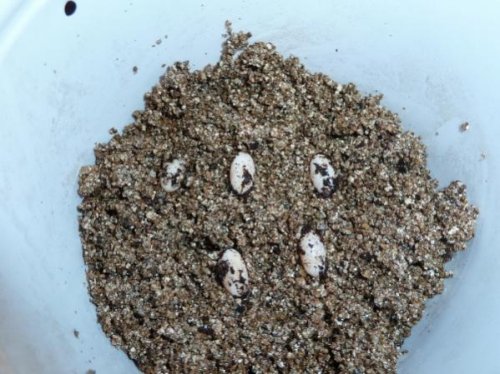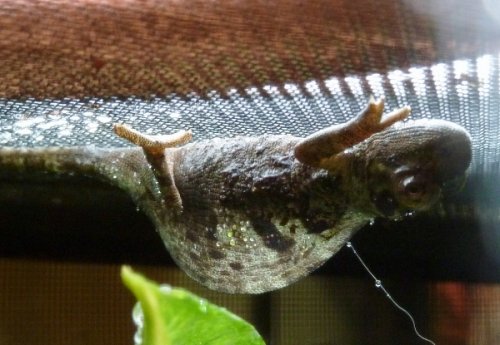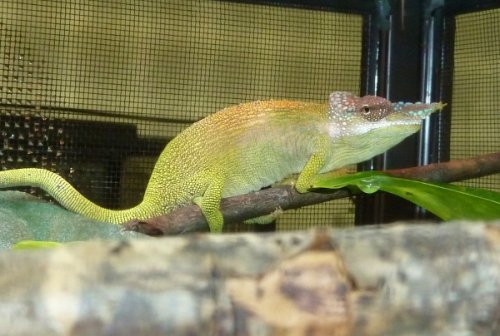Navigation
Install the app
How to install the app on iOS
Follow along with the video below to see how to install our site as a web app on your home screen.
Note: This feature may not be available in some browsers.
More options
You are using an out of date browser. It may not display this or other websites correctly.
You should upgrade or use an alternative browser.
You should upgrade or use an alternative browser.
k. oxyrhina copulation
- Thread starter melrito
- Start date
Cainschams
New Member
Umm no. She got her male from me buddy. And if anyone is after me its JaredI just hope it was a successful copulation and the eggs are fertile and melrito has the chameleon gods on her side and gets some cute little baby oxys

But you got the male from me!!!! LOLOL!! If it were me Id keep them all since you never know when this species will come in and if they will live.
But you got the male from me!!!! LOLOL!! If it were me Id keep them all since you never know when this species will come in and if they will live.
Great photos & good luck! I'd have to agree with Jared and keep them all until hopefully finding some new blood.
melrito
New Member
Thanksgiving eggs!!
Well, last night after Thanksgiving dinner, I went to check the girl and she was laying her eggs There are 5 in total, all look good and healthy, weighing in between 0.31 and 0.39 grams and about 1/3" long.
There are 5 in total, all look good and healthy, weighing in between 0.31 and 0.39 grams and about 1/3" long.
I have also added a picture of the girl from this morning (not the best angle/lighting, but I didn't want to disturb her - you can still see some of the dirt from digging stuck to her) as well as the male.
Well, last night after Thanksgiving dinner, I went to check the girl and she was laying her eggs
I have also added a picture of the girl from this morning (not the best angle/lighting, but I didn't want to disturb her - you can still see some of the dirt from digging stuck to her) as well as the male.
Attachments
eisentrauti
Avid Member
Congrats, thats really good work !
Cainschams
New Member
How did I miss this

Congrats!! Lets hope for a successful incubation and healthy neonates!!!!
Congrats!! Lets hope for a successful incubation and healthy neonates!!!!
coldbloodedAL
Avid Member
Congradulations! I hope all goes well for these little ones :
melrito
New Member
Just wanted to update everyone on the eggs... the eggs are turning a yellowish color, yet they are still hard and not shriveling up. The eggs were coated with a slimy mucus-like substance when they were laid, which appears to be normal for this species according to an article I read from one German who successfully bred this species and got babies back in 2007(thanks again Eisentrauti for the article). It appears that this mucus substance molded a bit and I'm wondering if this caused the discoloration of the eggs? Has anyone else experienced this and did the eggs survive? Any suggestions for future egg laying of what I could do to potentially avoid this issue?
The male and female are both doing great.
I am planning to translate the article I got from Eisentrauti into English as soon as I have time (probably over Christmas), so if anyone is interested in this, please let me know (showjet95- I will definitely send it to you when I'm done).
The male and female are both doing great.
I am planning to translate the article I got from Eisentrauti into English as soon as I have time (probably over Christmas), so if anyone is interested in this, please let me know (showjet95- I will definitely send it to you when I'm done).
CNorton
Avid Member
I'm interested! With every species, we can only hope to learn quickly the details and intricacies associated with that particular species. What you're doing is a great thing! I can't tell you how much of what I have learned was from trail and error.
I can't say that I've heard anything about mucus coating the eggs. I'm always careful to brush off excess sand from laid eggs. I actually do leave some dirt/sand a bit for fear I remove whatever coating is on them. But I've never heard of a mucus that molds into a different color. Wouldn't you have to assume it would also mold in the wild? I would think what you've seen so far could be perfectly normal. Just my two cents!
I can't say that I've heard anything about mucus coating the eggs. I'm always careful to brush off excess sand from laid eggs. I actually do leave some dirt/sand a bit for fear I remove whatever coating is on them. But I've never heard of a mucus that molds into a different color. Wouldn't you have to assume it would also mold in the wild? I would think what you've seen so far could be perfectly normal. Just my two cents!
Cainschams
New Member
That is odd. Ive had tavetana eggs with a red hue and not completely white but nothing with mucus on them. Those ones all hatched out fine. Ive got my fingers crossed and Id definitely like the article
melrito
New Member
Unfortunately, the eggs molded after about 2 months of incubationand didn't make it. I don't know if this is a general issue with this species or not - I was able to obtain an article in German written by someone who successfully bred this species and they had the same problem with one clutch of eggs. However, they did have success with 3 other clutches, so I am keeping my fingers crossed that the next clutch (she is gravid and due to lay in less than 2 weeks) will survive. Any tips on how to possibly avoid this problem would be greatly appreciated!
Similar threads
- Replies
- 25
- Views
- 4K








